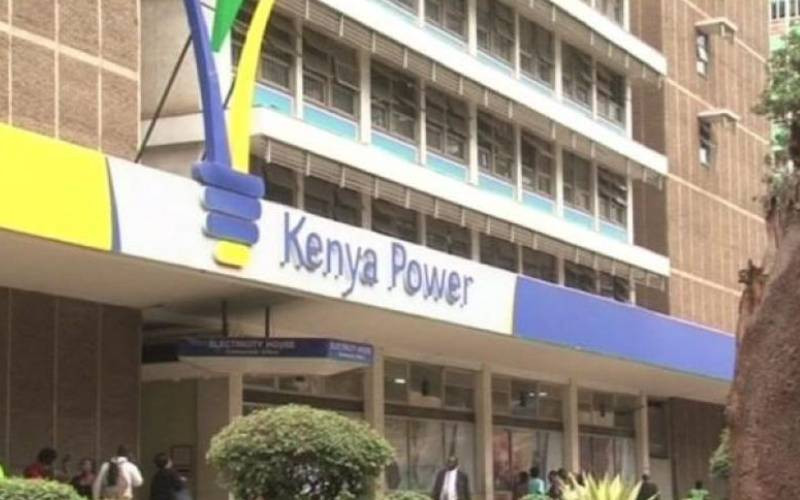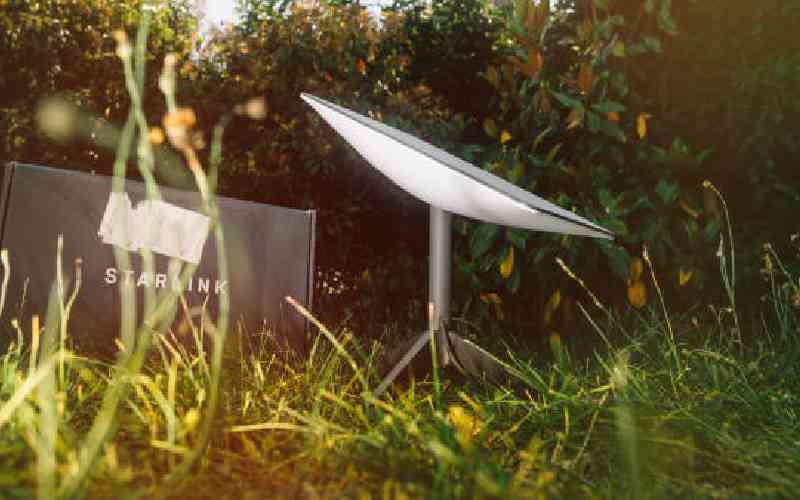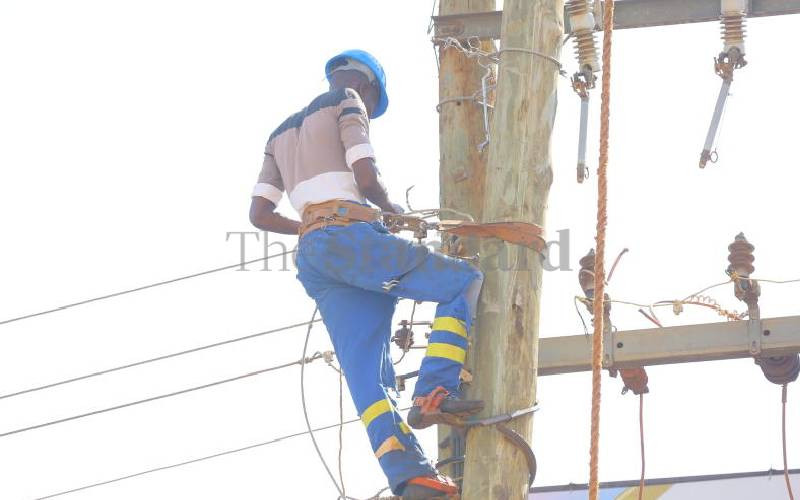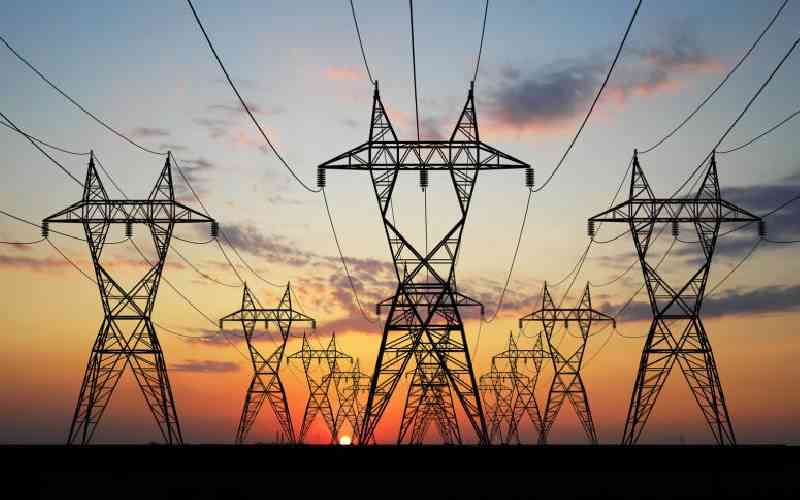
The countrywide electricity outage on Friday night and Saturday morning has rekindled talks on whether power utilities should compensate consumers whenever there are extended and unscheduled blackouts.
The government previously rejected proposed laws that require Kenya Power to compensate businesses whose power is cut off for more than three hours within a day.
The blackout last week caused major losses for residential electricity consumers as well as businesses, both large and small.
The prolonged blackout was also a major challenge for critical institutions such as hospitals, many of them unable to run backup generators for the duration of the blackout, with some, especially public hospitals having scant resources including backup generators or adequate fuel.
Among those pitching to have power utilities penalised and consumers compensated in case of lengthy blackouts include Nandi Senator Samson Cherargei who on Saturday said Kenya Power should compensate for loss of lives as well as losses incurred by businesses during the blackout.
The Energy and Petroleum Regulatory Authority (Epra) has in the past drafted regulations that would require power utilities to compensate users for losses or damage suffered due to failure, poor quality or irregularity in the supply of electricity. The draft regulations however required the electricity grid to be upgraded to the extent that it is reliable and provide quality power as per Epra prescriptions, which is yet to be attained.
Recent major power outages are shining a light on not just Kenya Power but also other players in the generation and transmission of power. The latest outage, Kenya Power had said, was due to the loss of 270MW from Lake Turkana Wind Power Plant (LTWP).
This, the power distributor had said, triggered an imbalance in the power system and tripped all other main generating power stations.
LTWP however noted that it was not the outage and that it had been "forced to go offline and stop generation following an overvoltage situation in the national grid system which, to avoid extreme damage, causes the wind power plant to automatically switch off."
While clarity is yet to emerge as to what caused the outage last weekend, other major blackouts have been due to failure by generating plants owned by different power producers as well as major transmission lines that are owned by the Kenya Electricity Transmission Company (Ketraco).
Rajan Shah, chairman of Kenya Association of Manufacturers (KAM) on Saturday told the Standard the disruptions that such unscheduled outages have on industries.
"For manufacturers, outages are always disruptive, especially when they are unplanned. Whilst many of our manufacturers have alternative backup power through generators, it is very expensive to run generators on diesel. This would increase production costs."
"Additionally, unplanned outages also lead to production losses for certain industries where the equipment stopping midstream would lead to incomplete production and hence product losses. Outages lead to equipment failures especially when many of the latest equipment has higher components of electronics which are susceptible to power fluctuations. In the end, besides lower cost of power, predictable and stability of power source is very critical for manufacturers."
Kenya Power has in recent years said it has made gains in reducing the duration it takes to reconnect consumers after a power outage.
The firm in its annual report to June last year said it had reduced the duration of outages to 2.74 hours during the year from 4.03 hours the previous year. This it said had been due to network maintenance initiatives.
A major blackout that was however experienced in January 2022 caused by the collapse of the Loiyangalani-Suswa and the Kiambere-Dandora transmission lines resulted in a drop in teh System Average Interruption Frequency Index (SAIFI).
"The System Average Interruption Frequency Index (SAIFI) declined during the year to 38.18 from 29.29 the previous year. This decline was partly attributed to the loss of one 220kV circuit on the Loiyangalani-Suswa line, a breakdown at Imara Daima, Kiambere-Dandora 132 kV line, and unplanned outages of the Olkaria geothermal plants," said Kenya Power.
The two lines evacuate power from two major generating sites - Lake Turkana Wind Power plant (Loiyangalani-Suswa) and the Seven Forks hydropower plants (Kiambere-Dandora) and being taken out of operations resulted in a crisis in the country.
Authorities opened an investigation, saying some power sector executives had neglected their duties, leading to the collapse of the towers. Three senior managers were subsequently charged with sabotage and negligence over the outage.
Earlier in May 2020, there was a similar nationwide outage after a section of a high-voltage line that transmits power to Nairobi from the Olkaria geothermal power plants in Naivasha broke.
Experts say power sector agencies need to spend billions of shillings to upgrade and expand its ageing network in the coming years and revamp the dilapidated transmission network to keep up with growing demand and end erratic power supply.
Kenya Power earlier this year said it plans to procure new specialised equipment in a bid to facilitate a faster response to increasing blackouts in the country.
The emergency restoration system (ERS towers) would help the utility company to respond to the increasing frequency of nationwide power outages.
ERS towers are modular aluminium towers, used to quickly restore power on damaged power transmission lines in the developed world as well as to facilitate scheduled maintenance work with minimal power interruption.
A small team of six technicians can erect a 30-metre-long tower complete with insulators and anchors within three hours, according to some
The transmission tower systems are versatile as they can be used for restoring power following a disaster (flood, hurricane, war) or conducting scheduled maintenance work on existing towers without major interruptions as temporary line extensions.
They are fast and efficient since no civil engineering work is required to install them, experts say.
Kenya Power has recently said it would over the current financial year invest Sh40 billion in stabilising its electricity distribution network. The expansion and maintenance works were expected to start in July this year.
"Some of the initiatives that the Company has deployed to achieve this target include network investment to ensure that the power we supply is of good quality and that it is reliable," the company said in April.
"To ensure a stable power network we have committed Sh40 billion towards strategic network expansion and maintenance in the next financial year, starting July 2023. With a stable network, we will sell more and therefore lower capacity charges per unit sold therefore lowering the overall cost of power."
 The Standard Group Plc is a multi-media organization with investments in media platforms spanning newspaper print
operations, television, radio broadcasting, digital and online services. The Standard Group is recognized as a
leading multi-media house in Kenya with a key influence in matters of national and international interest.
The Standard Group Plc is a multi-media organization with investments in media platforms spanning newspaper print
operations, television, radio broadcasting, digital and online services. The Standard Group is recognized as a
leading multi-media house in Kenya with a key influence in matters of national and international interest.











